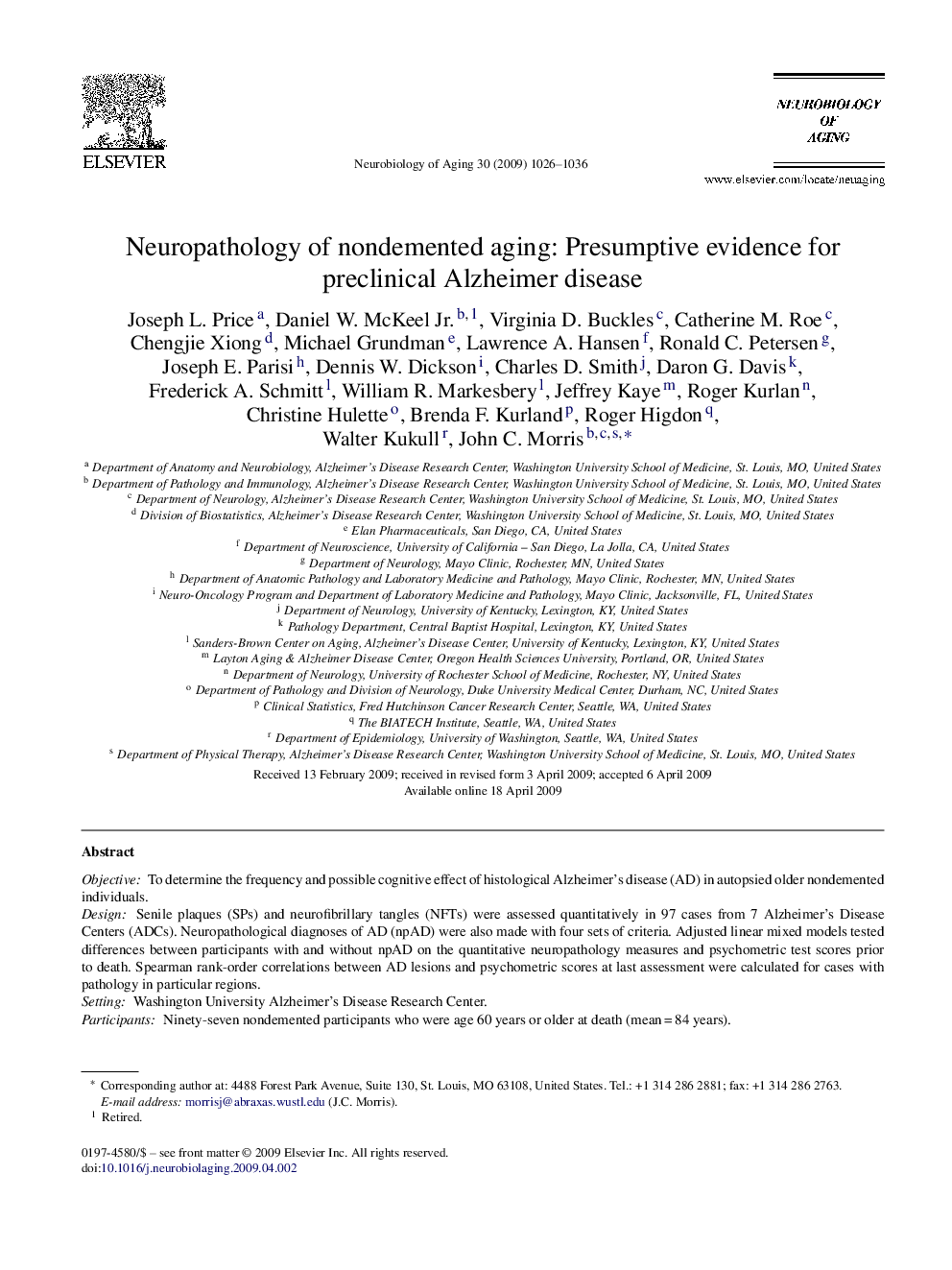| Article ID | Journal | Published Year | Pages | File Type |
|---|---|---|---|---|
| 330255 | Neurobiology of Aging | 2009 | 11 Pages |
ObjectiveTo determine the frequency and possible cognitive effect of histological Alzheimer's disease (AD) in autopsied older nondemented individuals.DesignSenile plaques (SPs) and neurofibrillary tangles (NFTs) were assessed quantitatively in 97 cases from 7 Alzheimer's Disease Centers (ADCs). Neuropathological diagnoses of AD (npAD) were also made with four sets of criteria. Adjusted linear mixed models tested differences between participants with and without npAD on the quantitative neuropathology measures and psychometric test scores prior to death. Spearman rank-order correlations between AD lesions and psychometric scores at last assessment were calculated for cases with pathology in particular regions.SettingWashington University Alzheimer's Disease Research Center.ParticipantsNinety-seven nondemented participants who were age 60 years or older at death (mean = 84 years).ResultsAbout 40% of nondemented individuals met at least some level of criteria for npAD; when strict criteria were used, about 20% of cases had npAD. Substantial overlap of Braak neurofibrillary stages occurred between npAD and no-npAD cases. Although there was no measurable cognitive impairment prior to death for either the no-npAD or npAD groups, cognitive function in nondemented aging appears to be degraded by the presence of NFTs and SPs.ConclusionsNeuropathological processes related to AD in persons without dementia appear to be associated with subtle cognitive dysfunction and may represent a preclinical stage of the illness. By age 80–85 years, many nondemented older adults have substantial AD pathology.
